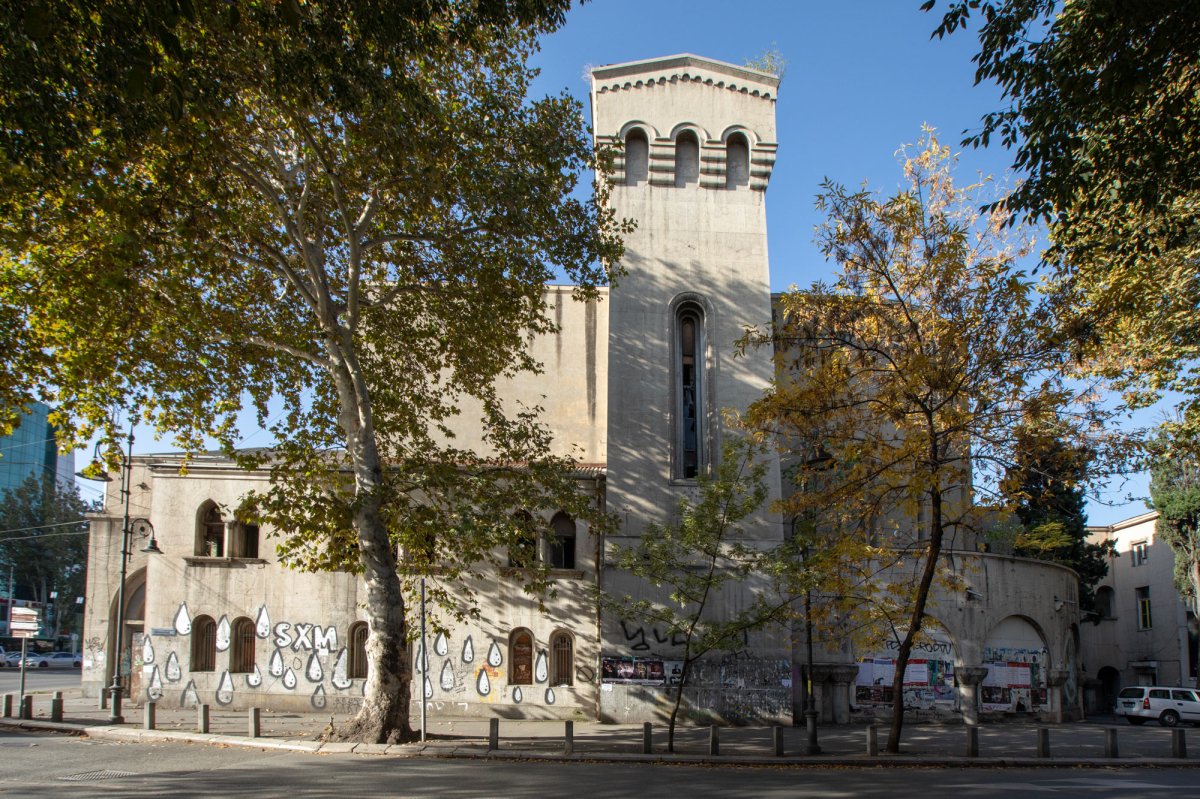
Information in details
The author of the project of one of the most important buildings of the city's urban heritage from the historical and artistic-architectural point of view, located at 103, D. Agmashenebeli Ave., is the famous German architect Leopold Bielfeldt, who has been working in Tbilisi since 1868. The building built in 1880 by the order of the successful merchant, brewer and politician, Jacob Friedrich Wetzel, was intended for the same hotel. Hotel "Wetzel" was considered the best and most comfortable establishment at the beginning of the 20th century. Friedrich Wetzel equipped it with all the possible comforts of his time. The rooms had water heating and electrical wiring; the hotel had an elevator, a billiard room, a bowling court and two restaurants, including one in the basement floor - decorated with "German-style" painting. Later, this restaurant received a separate name - "Germany", but the main thing that distinguished "Wetzel" from other hotels in Tbilisi was a theater arranged in its left wing, in which various troupes periodically held performances. Periodically, weddings and other celebrations were organized here. The hotel also had a garden, in which the orchestra of the Opera House held concerts in the summer. In 1900, with the same project as Bielfeldt, two low wings were built to the Hotel from the side of Z. Chavchavadze (formerly Ksenia) Street. One of them was intended for service personnel, the other for the machine department. After Fridrich Wetzel's death, in 1911, his former subordinate, a wealthy entrepreneur at the time, Noe Sikharulidze, bought the hotel, who thoroughly remodeled and expanded the building and renamed it to "Noe". Agricultural wings on Ksenia Street were taken down, due to which the right wing of the building was significantly extended. The changes also affected the main facade. A large veranda was added to the hotel and the main entrance was decorated with sculptures of helmeted Hermes; In the interior, artificial caves were made on the first and second floors. The hotel changed its name several times. During the Soviet period, in 1928, it was called the "Europe". After a while it was closed, but after the Second World War it was opened again, this time under the name of "Rustavi". In the 1970s, the hotel was closed again. Since then, the building has been occupied by various state structures. The richly decorated facades of the three-story mansard building with the plan of the Latin letter U are an outstanding example of baroque eclecticism, with which the modern "Art Nouveau" was made with taste and delicacy. Synthesizing the style, which is expressed by the mannerly sculptures of Hermes with torches adorning the central entrance. With its scale, decoration and artistic-architectural solution, this building plays an important role in creating the artistic-historical and architectural-planning face of Davit Aghmashenebeli Avenue.


 თბილისი, Davit Agmashenebeli Ave N103
თბილისი, Davit Agmashenebeli Ave N103
 41.7117959, 44.7959692
41.7117959, 44.7959692







